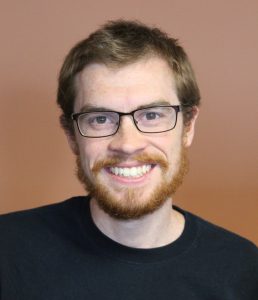
Mailing Address:
Physics Department
2320 Chamberlin Hall
University of Wisconsin-Madison
1150 University Ave.
Madison, WI 53706-1390
USA
Email:
kbechtol@wisc.edu (academic matters); kbechtol@lsst.org (research related to Rubin Observatory)
Office:
Chamberlin 6203
(608) 265-5815
I joined the Physics Department faculty at the University of Wisconsin-Madison in Fall 2018.
I study dark energy, dark matter, neutrinos, and multimessenger astrophysics. I am particularly interested in using wide-field optical imaging surveys and pointed follow-up observations to map the distribution of dark matter in the Milky Way and nearby galaxies, and to learn about the particle properties of dark matter in the process. The next major experiment in this field is the Vera C. Rubin Observatory, now under construction in Chile, with first light scheduled in 2021. The associated Legacy Survey of Space and Time (LSST) will catalog more stars and galaxies than all previous astronomical surveys combined, and will monitor transient, variable, and moving objects over a ten-year period, generating ∼ 10 million alerts each night. The resulting multipurpose dataset will enable discoveries in cosmology (e.g., dark energy, neutrino physics, inflation) as well as the formation of our Galaxy and our Solar System. I am one of the leads for Rubin Observatory commissioning and science validation on-sky observations and data analysis.
I am also an active member of the Dark Energy Survey (DES), now in its fifth observing season, where I am searching for ultra-faint satellite galaxies of the Milky Way, and searching for electromagnetic counterparts to high-energy astrophysical neutrinos. As one of the Science Release coordinators for DES, I spend a significant fraction of my time helping to assemble and validate science-ready data products for a broad range of cosmological investigations. I am also Principle Investigator for the Magellanic Satellites Survey, a project using the same telescope and camera to search for hierarchical structure at the scale of dwarf galaxies as a novel test of the Cold Dark Matter paradigm.
Although my current focus is near-field cosmology with optical surveys, my research background also includes observational gamma-ray and neutrino astronomy. For my PhD, I studied several extragalactic source populations to understand the composition of the extragalactic gamma-ray background. I continue work on understanding the origin of the isotropic diffuse gamma-ray and neutrino emission.
My CV (updated March 2021)
Selected Papers
- Dark Energy Survey Year 1 Results: Photometric Data Set for Cosmology (2017)
- Evidence against Star-forming Galaxies as the Dominant Source of Icecube Neutrinos (2017)
- Searching for Dark Matter Annihilation in Recently Discovered Milky Way Satellites with Fermi-LAT (2017)
- Farthest Neighbor: The Distant Milky Way Satellite Eridanus II (2017)
- Nearest Neighbor: The Low-mass Milky Way Satellite Tucana III (2017)
- Estimating the GeV Emission of Millisecond Pulsars in Dwarf Spheroidal Galaxies (2016)
- An Ultra-faint Galaxy Candidate Discovered in Early Data from the Magellanic Satellites Survey (2016)
- A technique for detection of PeV neutrinos using a phased radio array (2016)
- Eight Ultra-faint Galaxy Candidates Discovered in Year Two of the Dark Energy Survey (2015)
- Search for Gamma-Ray Emission from DES Dwarf Spheroidal Galaxy Candidates with Fermi-LAT Data (2015)
- Eight New Milky Way Companions Discovered in First-year Dark Energy Survey Data (2015)
- The Spectrum of Isotropic Diffuse Gamma-Ray Emission between 100 MeV and 820 GeV (2015)
- GeV Observations of Star-forming Galaxies with the Fermi Large Area Telescope (2012)
- GeV Gamma-ray Flux Upper Limits from Clusters of Galaxies (2010)
- Detection of Gamma-Ray Emission from the Starburst Galaxies M82 and NGC 253 with the Large Area Telescope on Fermi (2010)
